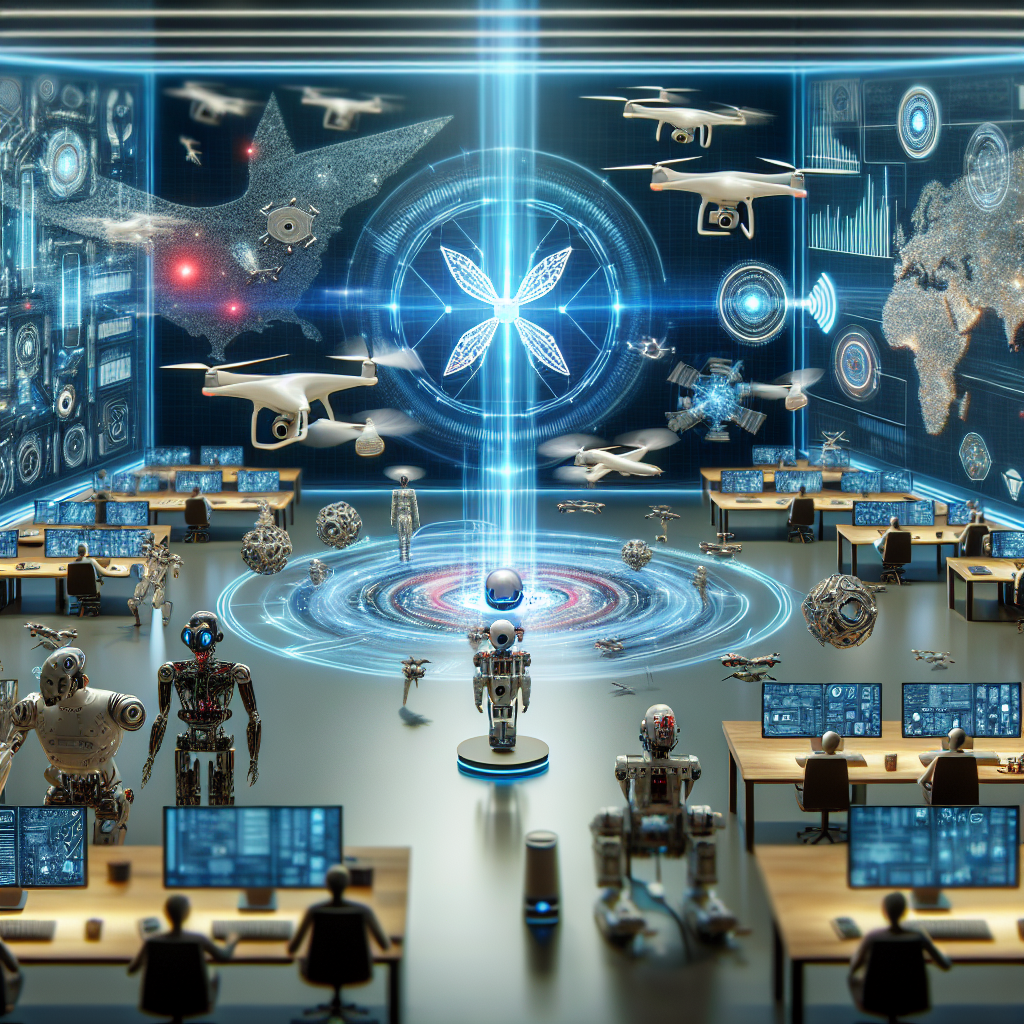In recent years, the use of artificial intelligence (AI) in autonomous drones and robotics has seen rapid growth and development. AI-driven solutions have revolutionized the capabilities of these technologies, enabling them to perform complex tasks with greater efficiency and accuracy. From precision agriculture to disaster response, the role of AI in autonomous drones and robotics is becoming increasingly important in various industries.
AI-driven solutions in autonomous drones and robotics play a crucial role in enhancing the capabilities of these technologies. By leveraging AI algorithms, drones and robots are able to make decisions in real-time based on data collected from sensors and cameras. This allows them to navigate complex environments, avoid obstacles, and perform tasks with a high level of precision.
One of the key benefits of using AI in autonomous drones and robotics is the ability to automate tasks that would be difficult or impossible for humans to perform. For example, in the agriculture industry, drones equipped with AI algorithms can analyze crop health and detect pests or diseases, allowing farmers to take proactive measures to protect their crops. Similarly, in the construction industry, robots powered by AI can autonomously perform tasks such as bricklaying or welding, increasing efficiency and reducing labor costs.
Another important aspect of AI-driven solutions in autonomous drones and robotics is the ability to learn and adapt to changing environments. Machine learning algorithms enable drones and robots to improve their performance over time by analyzing data and adjusting their behavior accordingly. This allows them to continuously optimize their performance and adapt to new challenges as they arise.
Furthermore, AI-driven solutions in autonomous drones and robotics can enhance safety and security in various applications. Drones equipped with AI algorithms can autonomously monitor and patrol large areas, detect intruders or hazards, and alert authorities in real-time. In disaster response scenarios, drones and robots powered by AI can be deployed to search for survivors, assess damage, and deliver supplies to affected areas, reducing the risk to human first responders.
Overall, the role of AI-driven solutions in autonomous drones and robotics is essential for unlocking the full potential of these technologies. By leveraging the power of AI algorithms, drones and robots can perform tasks with greater efficiency, accuracy, and autonomy, enabling them to tackle a wide range of challenges in various industries.
FAQs:
Q: What are some examples of AI-driven solutions in autonomous drones and robotics?
A: Some examples of AI-driven solutions in autonomous drones and robotics include drones equipped with computer vision algorithms for object detection and tracking, robots powered by machine learning algorithms for autonomous navigation and decision-making, and unmanned aerial vehicles (UAVs) with AI algorithms for precision agriculture and environmental monitoring.
Q: How does AI help drones and robots navigate complex environments?
A: AI algorithms enable drones and robots to analyze data from sensors and cameras in real-time, allowing them to make decisions on how to navigate complex environments, avoid obstacles, and perform tasks with a high level of precision. Machine learning algorithms also enable drones and robots to learn and adapt to changing environments, improving their performance over time.
Q: What are the benefits of using AI-driven solutions in autonomous drones and robotics?
A: The benefits of using AI-driven solutions in autonomous drones and robotics include increased efficiency, accuracy, and autonomy in performing tasks, the ability to automate tasks that would be difficult or impossible for humans to perform, improved safety and security in various applications, and the ability to learn and adapt to changing environments.
Q: How can AI-driven solutions in autonomous drones and robotics be applied in different industries?
A: AI-driven solutions in autonomous drones and robotics can be applied in various industries, including agriculture, construction, disaster response, surveillance and security, delivery and logistics, and healthcare. These technologies can help improve efficiency, reduce costs, and enhance safety and security in a wide range of applications.
In conclusion, the role of AI-driven solutions in autonomous drones and robotics is crucial for unlocking the full potential of these technologies. By leveraging the power of AI algorithms, drones and robots can perform tasks with greater efficiency, accuracy, and autonomy, enabling them to tackle a wide range of challenges in various industries. As AI continues to advance, we can expect to see even more innovative applications of autonomous drones and robotics in the future.

